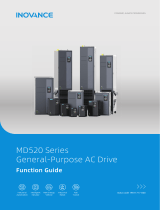
RS485 baudrate [x100 baud]:
Value
Baudrate
Status for DI1...DI16 input channel
0 =contact active,1 =contact inactive.
Bit0 correspond to channel 1,
Bit1 correspond to channel 2, etc.
DI1 counter input, high word
DI1 counter input, low word, value of
counter = (101) * 65536 + (102)
DI2 counter input, high word
DI2 counter input, low word, value of
counter = (103) * 65536 + (104)
DI3 counter input, high word
DI3 counter input, low word, value of
counter = (105) * 65536 + (106)
DI4 counter input, high word
DI4 counter input, low word, value of
counter = (107) * 65536 + (108)
DI5 counter input, high word
DI5 counter input, low word, value of
counter = (109) * 65536 + (110)
DI6 counter input, high word
DI6 counter input, low word, value of
counter = (111) * 65536 + (112)
DI7 counter input, high word
DI7 counter input, low word, value of
counter = (113) * 65536 + (114)
DI8 counter input, high word
DI8 counter input, low word, value of
counter = (115) * 65536 + (116)
DI9 counter input, high word
DI9 counter input, low word, value of
counter = (117) * 65536 + (118)
DI10 counter input, high word
DI10 counter input, low word, value
of counter = (119) * 65536 + (120)
DI11 counter input, high word
DI11 counter input, low word, value of
counter = (121) * 65536 + (122)
DI12 counter input, high word
DI12 counter input, low word, value of
counter = (123) * 65536 + (124)
DI13 counter input, high word
DI13 counter input, low word, value of
counter = (125) * 65536 + (126)




















